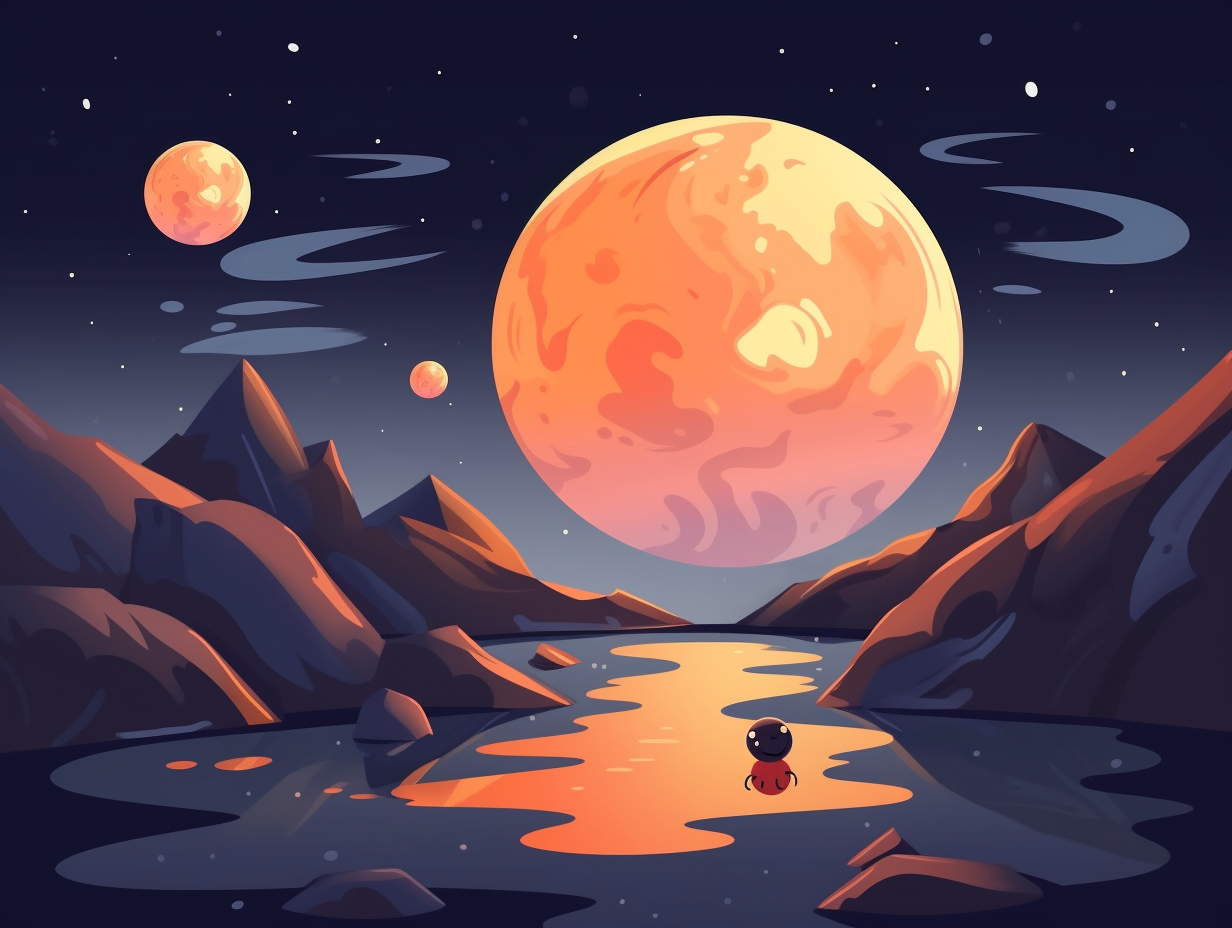Explore the Unknown: Top 14 Unbelievable Fun Facts About Triton, Neptune's Mysterious Moon

1. Ice Volcanoes on Triton
Forget about Earth's hot-headed volcanoes, Triton's got some cooler cousins: Neptune's largest moon is home to ice volcanoes that spew nitrogen and methane, thanks to periodic solar heating. Pictures from Voyager reveal plumes soaring 8 km high and stretching 140 km, making Triton a proud member of the solar system's volcanic quartet alongside Earth, Io, and Venus.
Source => nineplanets.org
2. Triton: The Retrograde Rebel
Ever heard the chart-topping tune "Ice Ice Baby" by Vanilla Ice? Well, Triton has been covering that track on Neptune's karaoke nights for eons: This funky moon orbits Neptune in retrograde, meaning it spins in the opposite direction of the planet's rotation, making it quite the celestial rebel. As a cherry on top, Triton's surface is mostly nitrogen ice with some methane and carbon monoxide ice mixed in, giving it that frosty allure no other large moon in the solar system can claim.
Source => livescience.com

Did you know that Neptune was discovered through a cosmic game of hide and seek? 🌌🔍 Find out how mathematical predictions led to its reveal in 1846!
=> Fun Facts about Neptune
3. Triton's Moonwalk Orbit
If Neptune held a quirky talent show, Triton would surely moonwalk its way to the top spot: Triton, the largest of Neptune's moons, boasts a retrograde orbit that goes against Neptune's rotation and is the only large moon in the solar system with such a groovy, rebellious dance move, thanks to its origin from the Kuiper Belt and subsequent capture by Neptune.
Source => en.wikipedia.org
4. Triton's Dramatic Dating Profile
If Triton had a dating profile, it might read, "Icy-hearted but prone to dramatic outbursts": Triton's distinct geology, marked by a youthful surface, suggests that it could experience cryovolcanism, where volatile, frigid fluids erupt and transform its landscape, forming features like ring paterae, pitted cones, and pit paterae.
Source => iopscience.iop.org

5. Triton's Frozen Fountains
Step right up and embrace the marvel of Triton's frozen fountains, where nitrogen and organic compounds shoot up to more fabulous heights than a gossip columnist could ever dream: Triton's geysers, the tallest in the solar system, spew icy material up to five miles (eight kilometers) high, with eruptions lasting up to a year, all thanks to gravitational stress, retrograde orbit around Neptune, and a solar-energy-induced greenhouse effect, while basking in a frosty -400°F (-240°C) ambient temperature.
Source => nps.gov
6. Triton Mooning Neptune
In a bold display of cosmic rebellion, Triton mooned Neptune and went the wrong way: Triton is the only moon in the solar system with a retrograde orbit, moving in the opposite direction of Neptune's rotation due to its likely origin as a dwarf planet from the Kuiper Belt, loaded with radioactive heat-producing material that allows for a subsurface ocean of liquid water.
Source => worldatlas.com
7. Triton: The Ultimate Chiller
Triton might just be the ultimate destination to chill out, literally speaking: with a surface temperature of approximately -235°C, this space popsicle is even colder than Pluto's average -229°C, and boasts cryovolcanoes that spew geysers of liquid nitrogen and ammonia up to 8 km high.
Source => phys.org
8. Triton's Atmospheric Breakup
Why did Triton break up with Neptune? Because it couldn't handle the pressure! Quite literally: Triton's atmosphere is less than 1/70,000 the pressure of Earth's atmosphere at sea level. This nitrogen-charged air may be wafer-thin, but it's alive with the icy geysers that Voyager 2 discovered during its marvelous flyby in 1989.
Source => en.wikipedia.org
9. Gaseous Retrograde Cousin
Triton, the retrograde moon-cousin of Earth, seems to have developed quite a gas problem, geyser-ing away like a nitrogen fanatic: The moon's atmosphere, as observed during Voyager 2's 1989 flyby, is dominated by nitrogen and contains active geysers on its surface, erupting nitrogen gas at intensities less than 1/70,000 the pressure of Earth's atmosphere, suggesting Triton is one of the rare geologically active moons in the solar system.
Source => en.wikipedia.org

10. Triton's Cosmic Swagger
Moonwalking in retro style: Triton, Neptune's largest moon, throws planetary shade as it orbits rebelliously inclined at 25 degrees to Neptune's equator, making its solar eclipses a rare cosmic swagger only seen when this orbital renegade fully cloaks the Sun, blitzing it with rap-speed shadow play.
Source => en.wikipedia.org
11. Cold Shoulder Cryovolcanoes
Next time you're on Neptune's moon Triton, don't expect hot lava eruptions — you'll get a cold shoulder that will send shivers down your spine, courtesy of cryovolcanoes: These frosty mountains spew water, ammonia, or methane that freeze upon contact with the extreme cold surroundings, creating a unique icy burst in the depths of the Solar System.
Source => en.wikipedia.org
12. Hipster Moon Triton
If Triton were a hipster moon, it would be cruising through space, proudly defying the norms of planetary motion, with a dazzling coat of frozen nitrogen that puts the brightest stars to shame: Triton, Neptune's largest moon, orbits in the opposite direction of Neptune's rotation, possesses a highly reflective surface due to its nitrogen ice layer, and has been witnessed spurting plumes of nitrogen gas and dust, indicating potential geological activity.
Source => nasaspaceflight.com
13. Jack Frost & Elsa's Moon Child
If Jack Frost and Elsa had a lovechild, intergalactic style, it would probably be Triton: This icy moon of Neptune boasts a surface temperature of -235°C, making it one of the coldest celestial bodies in our Solar System, even chillier than the famous Pluto with its average temperature of -229°C.
Source => universetoday.com
14. Triton's Whale-Sized Dominance
What do Triton and Moby Dick have in common? They both have a whale of a time making dwarf planets feel small: Triton, Neptune's seventh-largest moon, boasts a diameter of 2,710 kilometers, overshadowing the likes of Pluto, yet still humbly falls short against Nereid, Neptune's third-largest moon, by a mere 340 kilometers.
Source => en.wikipedia.org
Related Fun Facts




















